Christine Spengler (born 1945 in Alsace, France, raised in Madrid) is one of only a few renowned female war photographers of the 20th Century. Since 1970, she has photographed and reported on conflicts, primarily from the point of view of the victims of war. She worked freelance as a photographer for Sipa-Press, Corbis-Sygma, and AP, while she documented wars in Chad, Northern Ireland,Vietnam, Cambodia, Lebanon, Western Sahara, Kurdistan, Nicaragua, Kosovo, Afghanistan, and Iraq, among others. Her work has appeared in news publications worldwide, including
Paris-Match,
Time,
Newsweek,
El País,
The New York Times, and
Le Monde.
 © Christine Spengler Mouvement nationaliste et indépendantiste Polisario
© Christine Spengler Mouvement nationaliste et indépendantiste Polisario
 © Christine Spengler/Sygma/Corbis
© Christine Spengler/Sygma/Corbis
 01 Mar 1973, Vietnam --- Tattooed Vietnamese Soldier
01 Mar 1973, Vietnam --- Tattooed Vietnamese Soldier
 1°anniversario rivoluzione iraniana . Teheran, Iran, 1979 6-7 settembre
1°anniversario rivoluzione iraniana . Teheran, Iran, 1979 6-7 settembre
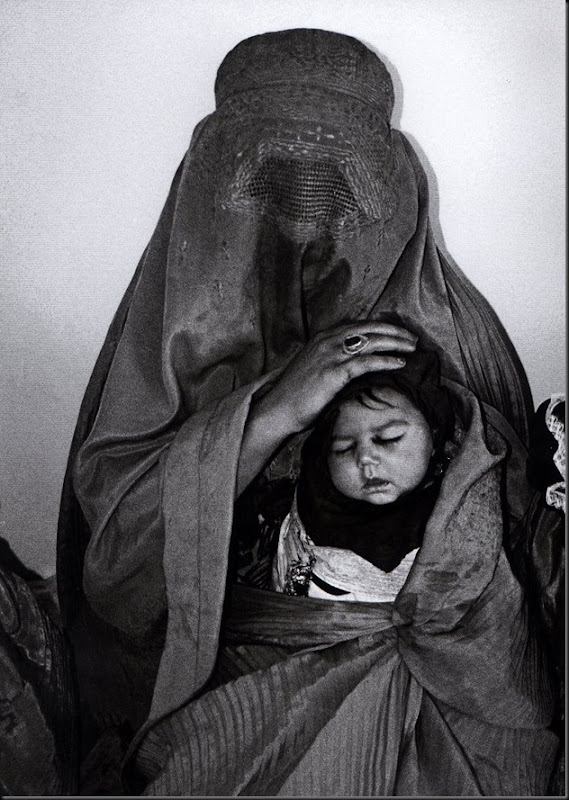 Afghanistan, 1997
Afghanistan, 1997
Christine Splengler has won several prizes for her work as a reporter, in particular the SCAM Prize (Paris) for her report on women in the war in 1998; and the
Femme de l'Année (Woman of the Year) Prize in Brussels in 2002. She was honored with a major one-person retrospective exhibition in 2003 at the international photojournalism festival
in Perpignan, France.
As a committed photographer, Christine Spengler devotes her art to "forgotten" causes. At the risk of her life, she wants to bring out the beautiful aspects of the saddest of events that happen to mankind (Chad, Beirut, Kabul...).
 Bambini a Londonderry, Londonderry, Irlanda del Nord, circa 1970
Bambini a Londonderry, Londonderry, Irlanda del Nord, circa 1970
 Belfast, Irlanda del Nord, 1972
Belfast, Irlanda del Nord, 1972
 Bogside, Derry, Northern Ireland, 1976
Bogside, Derry, Northern Ireland, 1976
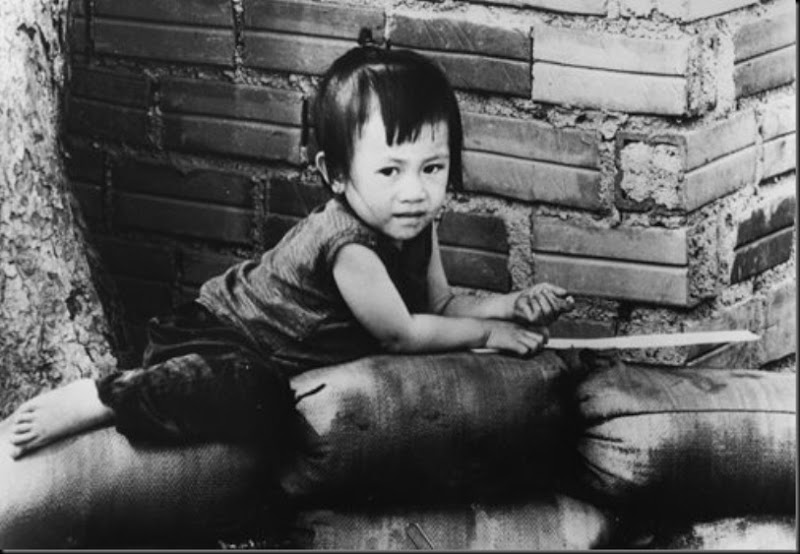 Cambogia, 1974
Cambogia, 1974
 Cambogia, bambini che nuotano nel fiume Mekong, 1974
Cambogia, bambini che nuotano nel fiume Mekong, 1974
Christine Spengler takes her first photographs in Chad in 1970, and decides to become a war reporter "to testify in favour of just causes and against the horrors that happen on the other side of the world". Spanish newspapers and television programmes were be the first to show her works. In 1973, while in Vietnam, she receives a telegram saying that her brother had committed suicide. This strengthens her vocation as a reporter: "For fifteen years, I threw myself into taking black and white photographs of the sorrows of the world", and she covers all the world's hot spots: Cambodia, Nicaragua, El Salvador, Lebanon, the Western Sahara....
In Lybia, Christine Spengler photographs President Khadafi and learns Arabic.
She begins to write a book about her life.
Then she goes to Chile for the newspaper Times.
In 1984, she is taken hostage in Beirut by the Morabitoune fighters.
Christine Spengler stays in Madrid, the town where she grew up, from 1984 to 1988 and photographs the most famous bullfighters almost as if they were icons. These extremely coloured images were a real antidote to stress and anxiety: "I said to myself (...) that each time I would take a photograph of mourning, I would take a photograph of beauty". These photographs are put together in a book called Virgins and bullfighters, written by Pedro Almodovar and Christian Lacroix.
In 1991, following the publication of her autobiography Une femme dans la guerre (Editions Ramsay) and the exhibition Guerres et Rêves at the Espace photographique of Paris, Christine Spengler is invited on a television programme with Henri Chapier, Bernard Pivot, Bernard Rapp, Jean-Marie Cavada and Aline Pailler.
In 1995, she works in Saigon for the 25th anniversary of the end of the war. In Kabul, she photographs women oppressed by the Taliban. In 1998, Pol Pot dies and Christine Spengler returns to Cambodia.
In 1998, she is awarded a Prize by the SCAM (Civil society of multimedia authors) for her story Femmes dans la guerre (1970-1997) and in 2002 she is named "Woman of the Year" for all her work on war.
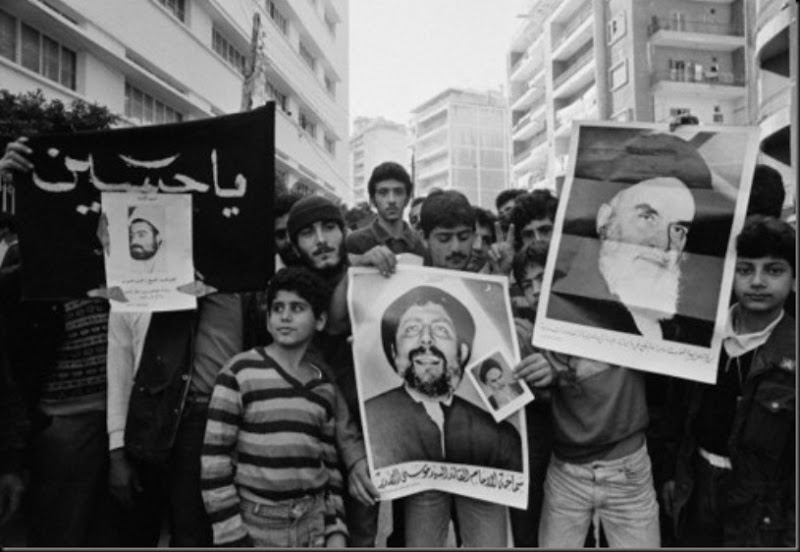 Demonstration of the Shiite political movement in Beirut. Protestants hold posters of Lebanese resistance leader and Muslim cleric Ragheb Harb
Demonstration of the Shiite political movement in Beirut. Protestants hold posters of Lebanese resistance leader and Muslim cleric Ragheb Harb
 Donna in possesso di un fucile a West Beirut, Beirut, Libano, 10 marzo 1982
Donna in possesso di un fucile a West Beirut, Beirut, Libano, 10 marzo 1982
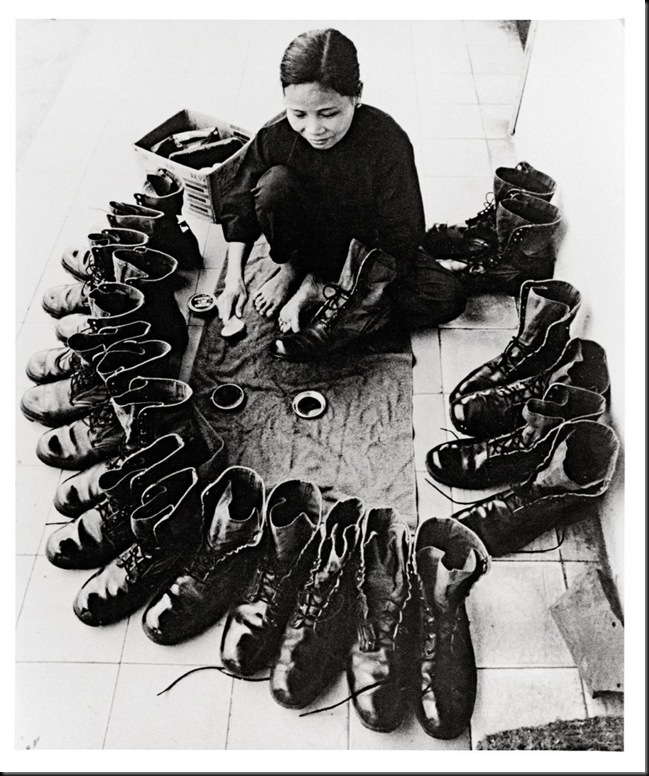 Donna Vietnamita lustrascarpe. Vietnam, circa 1973. Sembrano stivali militari statunitensi
Donna Vietnamita lustrascarpe. Vietnam, circa 1973. Sembrano stivali militari statunitensi
 Fronte Polisario soldati. Sahara occidentale, nel mese di ottobre 1981
Fronte Polisario soldati. Sahara occidentale, nel mese di ottobre 1981
 Giorno dei Morti nei pressi del cimitero di La Paz, in Bolivia, per commemorare, Bolivia, 1 novembre 1980
Giorno dei Morti nei pressi del cimitero di La Paz, in Bolivia, per commemorare, Bolivia, 1 novembre 1980
 Iran, il cimitero dei martiri di Qom, 1979
Iran, il cimitero dei martiri di Qom, 1979
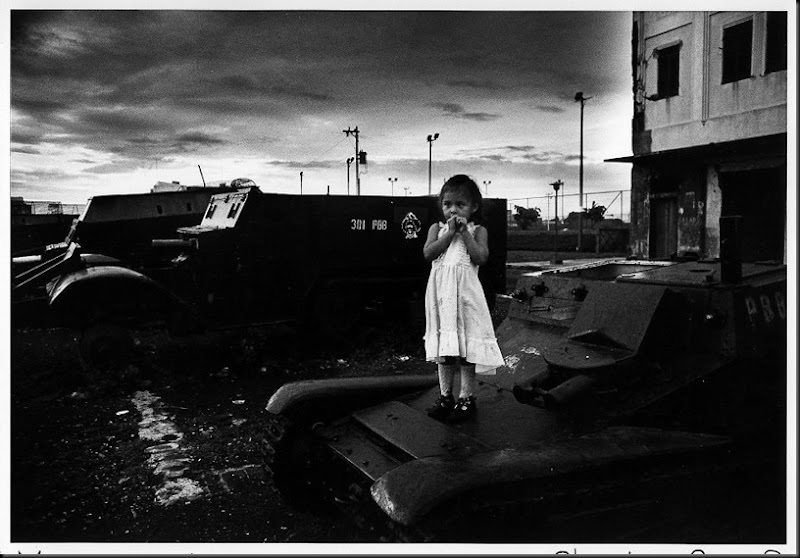 Ragazza in piedi sui carri armati. Managua, Nicaragua, nel 1980, 1 ° novembre.
Ragazza in piedi sui carri armati. Managua, Nicaragua, nel 1980, 1 ° novembre.
 Ragazza in processione funebre cattolica dell'Irlanda del Nord. 1970
Ragazza in processione funebre cattolica dell'Irlanda del Nord. 1970
 Sahara occidentale, Fronte Polisario in Guelta Zemmour, 1981
Sahara occidentale, Fronte Polisario in Guelta Zemmour, 1981
 Londonderry, Irlanda del Norte
Londonderry, Irlanda del Norte
 Demonstration of the Shiite political movement in Beirut. Protestants hold posters of Lebanese resistance leader and Muslim cleric Ragheb Harb
Demonstration of the Shiite political movement in Beirut. Protestants hold posters of Lebanese resistance leader and Muslim cleric Ragheb Harb Giorno dei Morti nei pressi del cimitero di La Paz, in Bolivia, per commemorare, Bolivia, 1 novembre 1980
Giorno dei Morti nei pressi del cimitero di La Paz, in Bolivia, per commemorare, Bolivia, 1 novembre 1980


















Nessun commento:
Posta un commento